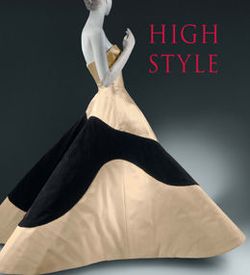Evening dress
Designer Charles James American
Not on view
Charles James produced some of the most memorable garments ever made. He began his design career in the 1930s. It peaked between the late 1940s and mid- 1950s, when his scarce and highly original gowns were sought after by society's most prominent women. Personally draping and constructing the garments that bear his label, he is considered to be the only American to work in the true couture tradition. James saw himself as an artist and sculptor of dress rather than a dressmaker. He manipulated fabrics into dramatic shapes using complex seaming and sometimes complicated understructures to create his singular vision of timeless elegance. A master of the relationship between form, color and texture, he often heightened the drama of his evening wear by combining several like fabrics of different colors, or different fabrics in like colors but with different light reflective qualities. Also a perfectionist, he worked for years on refining certain seam lines, shapes and constructs that particularly expressed his vision of artistry through rigorous engineering. Many of his pieces are conceived asymmetrically and possess a sense of movement and vitality that is a signature characteristic of his work. Many historical references in shapes and construction, especially the drapery forms of the 1870s and early teens, are also prevalent throughout his work.
The construction of this dress reconfigures the body by having the harder draped fabric brought forward and soft fabric at the back, the opposite from the norm, giving the appearance of front and back being reversed. The startling color contrast and different reflective qualities of satin, wool-backed crepe and faille in the skirt reinforce this deception. The form of the hips bears witness to James' claims of being a sculptor of fabric.
This image cannot be enlarged, viewed at full screen, or downloaded.
This artwork is meant to be viewed from right to left. Scroll left to view more.
















